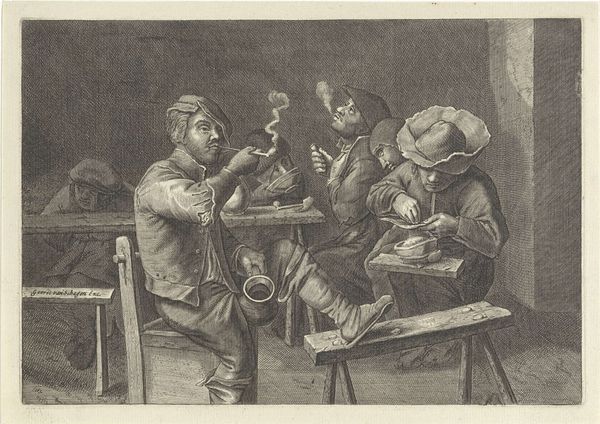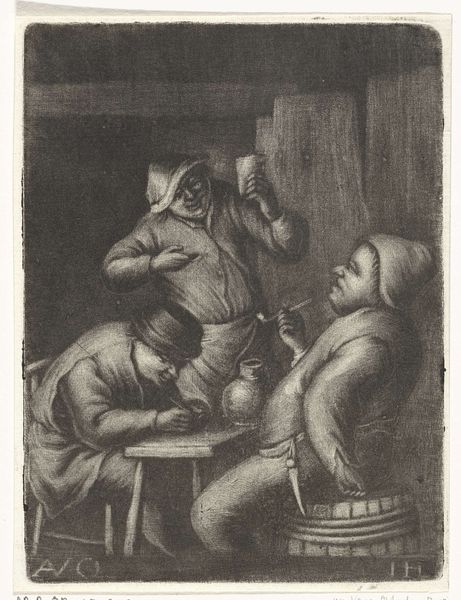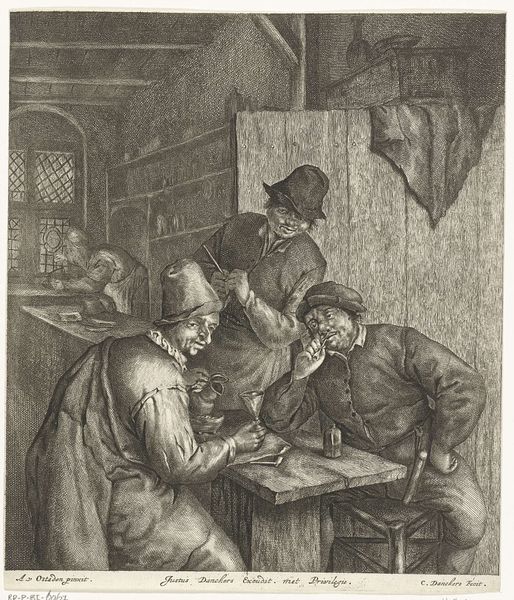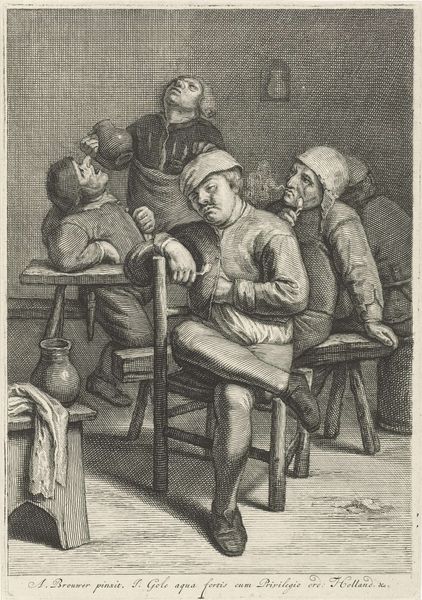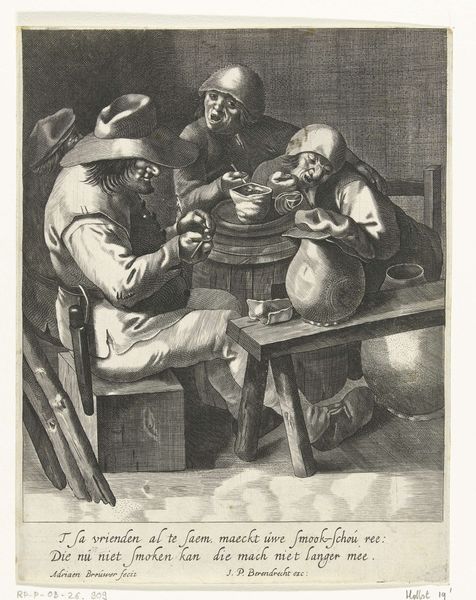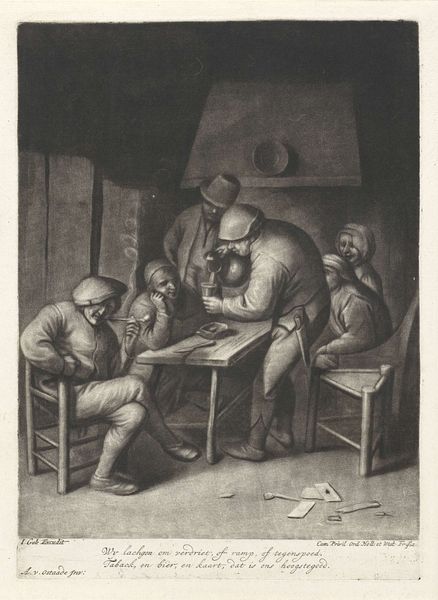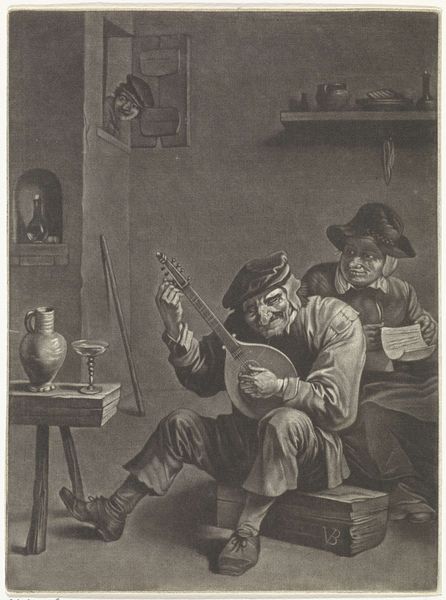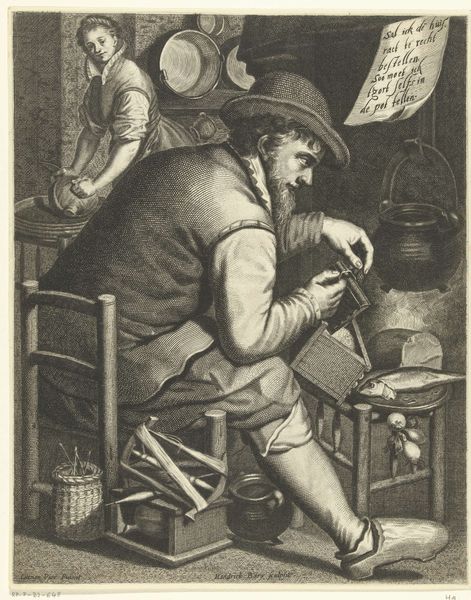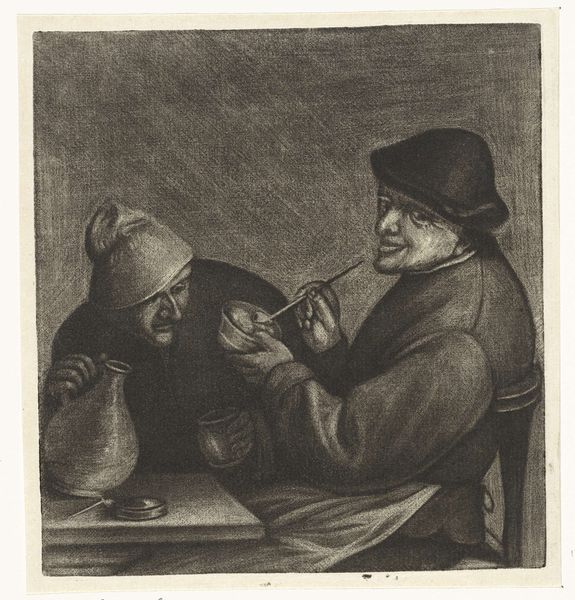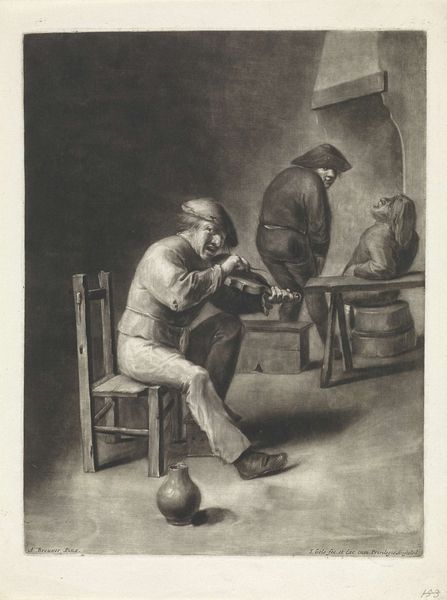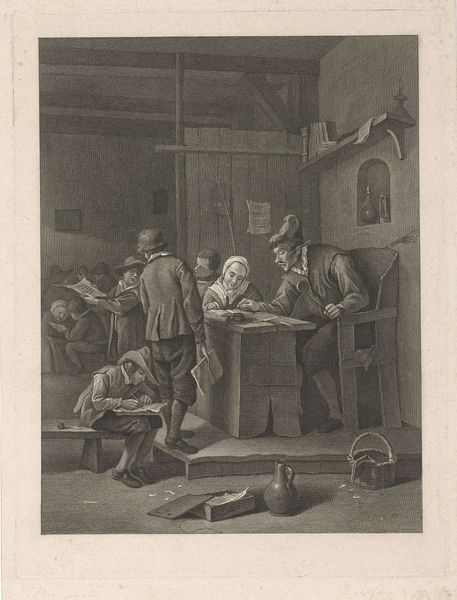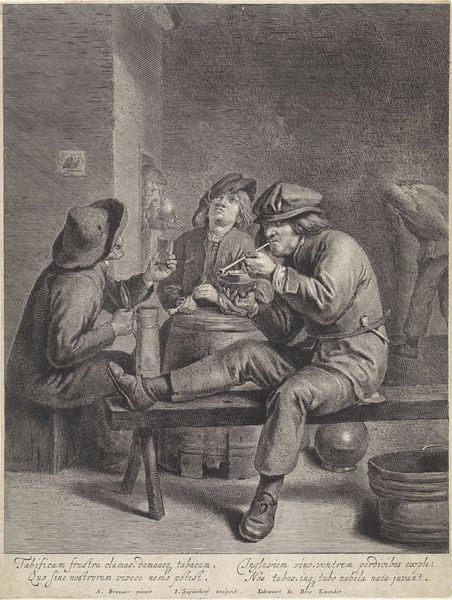
Dimensions: height 343 mm, width 280 mm
Copyright: Rijks Museum: Open Domain
Curator: What we have here is Lambertus Antonius Claessens's "Tavern Scene with Man Lighting a Pipe," estimated to have been created sometime between 1823 and 1834. It's rendered in a lovely, meticulous engraving style. My first thought on seeing it is its masterful use of light and shadow, really creating a tangible atmosphere. Editor: It strikes me as a very stage-managed scene, a group of characters frozen in time rather than engaged in actual conviviality. The gender roles on display, with the woman positioned further back and appearing more subservient to the central smoking man, invite us to think about the social hierarchy embedded in tavern culture. Curator: The pipe-smoker certainly dominates the composition. Note his elaborate attire; the wide brimmed hat and ruffled collar, set against the darker tones in the background, create a dramatic tension, even an element of theatricality to it all. Pipes often stood in for meditative thinking, for contemplation. Editor: Meditative thinking accessible only to certain people. Claessens’ era was shaped by power imbalances; class structures were becoming increasingly fluid, yet entrenched. Who were these taverns spaces for, and who did they exclude? Even within these settings, we see the performance of gender as a crucial social element. Look at the woman by the door in the mid-ground – why is she there, on the periphery of action, if not as part of a patriarchal serving infrastructure? Curator: Your reading has me reconsidering the historical context of this piece. What appears at first as an almost folksy glimpse into tavern life takes on more complexity when we examine the placement and possible function of each individual within that microcosm. And perhaps it’s no coincidence the pipe smoker is at the compositional fore – the active agent whose interior thoughts we might assume we know through familiar iconography. Editor: Exactly! That familiar iconography can blind us, making us overlook underlying currents and critical questions. Perhaps the composition is an intentional statement. Perhaps Claessens, consciously or unconsciously, was already registering shifting social attitudes within those ‘everyday’ environments. Curator: Well, regardless of the original intent, examining art through such a lens provides critical historical perspective on symbolic visual systems. It underscores art’s powerful capacity to reveal evolving norms through shared cultural iconography. Editor: It really does, allowing us to appreciate the intersectionality of past and present, challenging narratives, and making us all think a little more deeply.
Comments
No comments
Be the first to comment and join the conversation on the ultimate creative platform.
